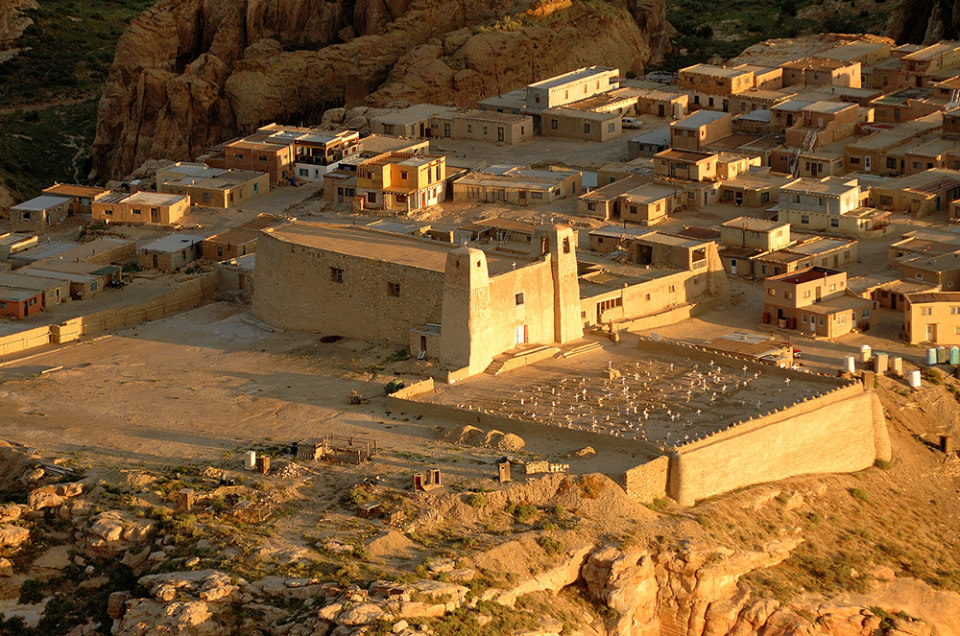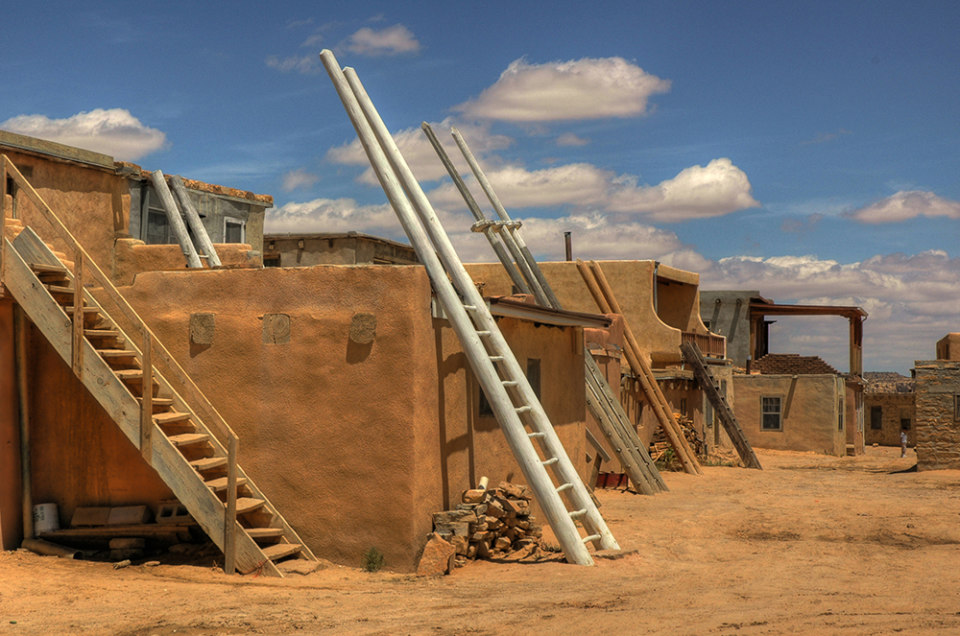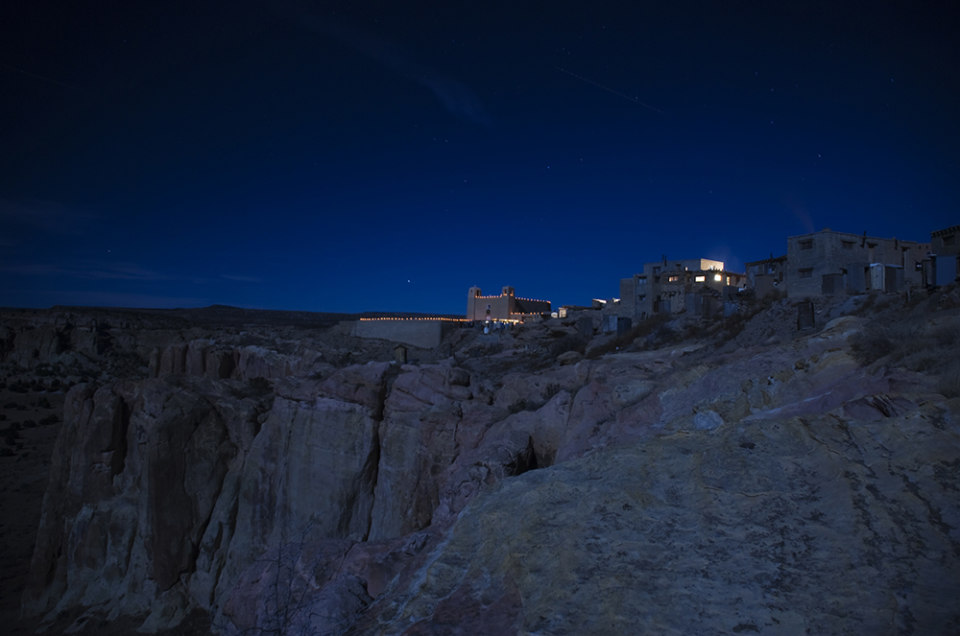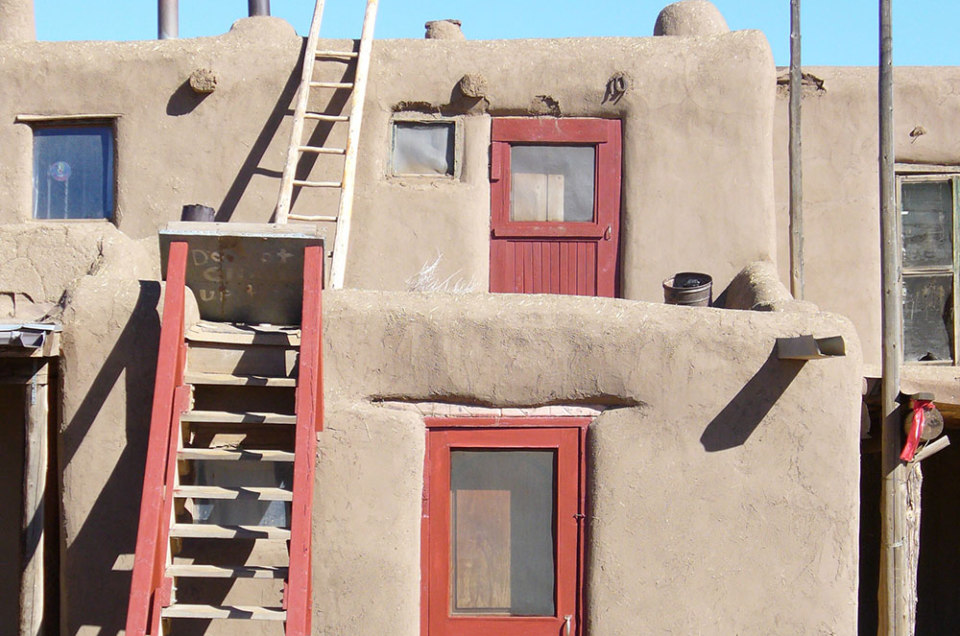Experience what was first: Leave your world as you know it behind and visit the tribal lands, where new life is breathed into America’s richest ceremonies and fresh footprints mark the walkways of the country’s oldest villages. Here, the 19 Native American Pueblos of New Mexico await your discovery.
Set primarily in the state’s northwest, the Pueblos are freestanding villages, each with its own distinct culture expressed in the individualized art, architecture and customs. While the specific Pueblo experience varies from village to village, in general, visiting is a chance to tour centuries-old homes, explore top terrain features of the state, and collect some unique pottery and art while you’re at it.
It’s important to remember that the Pueblo experience is a trip into a living community, where the cultural heritage is a vibrant part of modern life. A good example of the past living in the present can be tasted—quite literally—in the traditional oven and fry breads.
Don’t pass up these favorite Pueblo stops:
- Taos Pueblo. One of the eight Northern Pueblos, this village is possibly the oldest continuously inhabited community in the United States and was designated a World Heritage Site by UNESO. Visitors are welcome year round, and photography is allowed. Admission is $16 per adult, $14 for seniors and students, and free for children 10 and under.
- Pueblo de Cochiti. Part of the Central Pueblos, Cochiti is known equally for its Kasha-Katuwe Tent Rocks National Monument and its artistry. The tent rocks, a series of cone-shaped rock towers, are one of the top natural attractions in New Mexico, and the Cochiti artists are highly revered for their drum-making skills, as well as their storyteller figurines. Admission is free; mobile phones and all recording devices are prohibited.
- Pueblo of Acoma. A Northwest New Mexico Pueblo, this historical village is located 365 feet up, atop a sandstone mesa, which has given this Pueblo the name “Sky City.” The main attraction is the view and the guided tour that takes visitors through the highlights of the city. Photography is allowed for a fee. Admission is $9 per adult, $8 for seniors, $6 for youth ages 5 to 17, and free for children under 5.
The best time for visiting a Pueblo is during Feast Day, a celebration of its patron saint. Held annually, even some villages that are normally closed to visitors invite outsiders to join the celebrations. Each Pueblo has its own saint (though some overlap), and the date of its feast day is the same year to year.
Some Pueblos that are only open on Feast Days are:
- Pueblo of Tesuque. Tesuque opens up on Nov. 12 for San Diego Feast Day. This is a rare opportunity to visit Camel Rock, located on the village’s grounds.
- Pueblo of Jemez. Also only open once annually for San Diego Feast Day, this red sandstone-enclosed village, is the last place the Towa dialect—and unwritten language—can be found in use.
While visiting Pueblos, it’s always important to check for any special rules the village might have for visitors. That said, there are a few general guidelines to keep in mind on a Feast Day:
- Home Invitations. You may be invited into private homes to share food with the hosts. If this happens, don’t linger as the host will be inviting a number of people in throughout the day, and tipping is not appropriate. Also, only enter a home if invited.
- Photography. In Pueblos that allow photography, there may be specific events that the hosts don’t want filmed or photographed. Ask what’s appropriate when entering.
- Boundaries. Even during Feast Days, kivas (ceremony rooms) and cemeteries are off-limits to visitors.
Sponsored by New Mexico Tourism.



